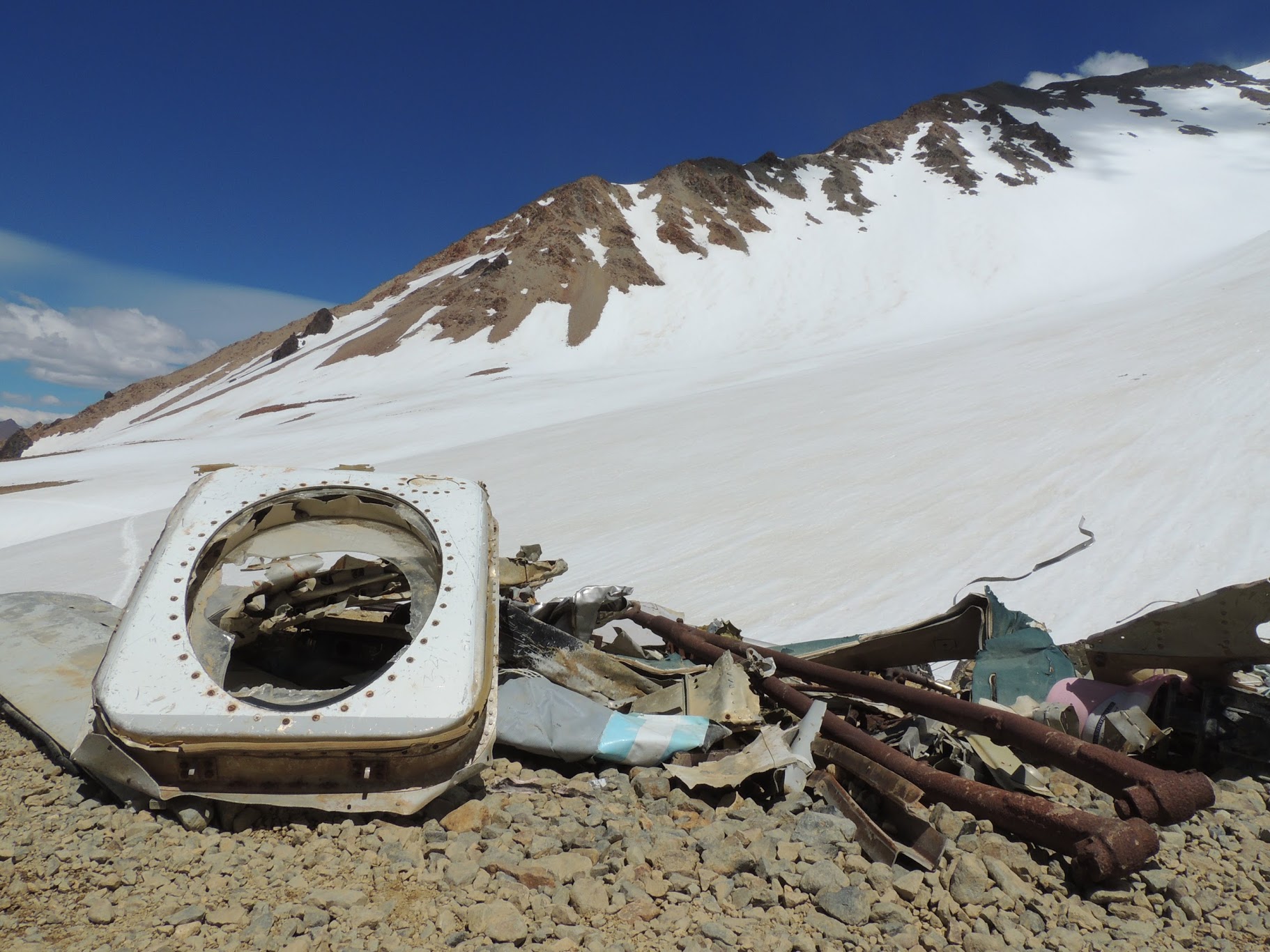Uruguayan Air Force Flight 571
 Uruguayan Air Force Flight 571 was the chartered flight of a Fairchild FH-227D from Montevideo, Uruguay, to Santiago, Chile, that crashed in the Andes mountains in Argentina on 13 October 1972. The accident and subsequent survival became known as both the Andes flight disaster (, literally Tragedy of the Andes) and the Miracle of the Andes ().
Uruguayan Air Force Flight 571 was the chartered flight of a Fairchild FH-227D from Montevideo, Uruguay, to Santiago, Chile, that crashed in the Andes mountains in Argentina on 13 October 1972. The accident and subsequent survival became known as both the Andes flight disaster (, literally Tragedy of the Andes) and the Miracle of the Andes ().The inexperienced co-pilot, Lieutenant-Colonel Dante Héctor Lagurara, was piloting the aircraft at the time of the accident. He mistakenly believed the aircraft had overflown Curicó, the turning point to fly north, and began descending towards what he thought was the Pudahuel Airport in Santiago de Chile. He failed to notice that the instrument readings indicated that he was still east of Curicó. Lagurara, upon regaining visual flight conditions, saw the mountain and unsuccessfully tried to gain altitude. The aircraft struck a mountain ridge, shearing off both wings and the tail cone. The remaining portion of the fuselage slid down a glacier at an estimated , descending before ramming into an ice and snow mound.
The flight was carrying 45 passengers and crew, including 19 members of the Old Christians Club rugby union team, along with their families, supporters and friends. Three crew members and nine passengers died immediately and several more died soon after due to the frigid temperatures and the severity of their injuries. The crash site is located at an elevation of in the remote Andes mountains of western Argentina, just east of the border with Chile. Search and rescue aircraft overflew the crash site several times during the following days, but failed to see the white fuselage against the snow. Search efforts were called off after eight days of searching.
During the 72 days following the crash, the survivors suffered from extreme hardships, including sub-zero temperatures, exposure, starvation, and an avalanche, which led to the deaths of 13 more passengers. The remaining passengers resorted to eating the flesh of those who died in order to survive. Of the 19 team members on the flight, seven of the rugby players survived the ordeal; 11 players and the team physician perished.
Convinced that they would die if they did not seek help, two survivors, Nando Parrado and Roberto Canessa, set out across the mountains on 12 December. Using only materials found in the aircraft wreck, they climbed for three days from the crash site up 30-to-60 degree slopes to a ridge to the west of the summit of Mount Seler. From there they trekked for seven more days into Chile before finding help. On 22 and 23 December 1972, two-and-a-half months after the crash, the remaining 14 survivors were rescued. Their survival made worldwide news.
The story of the "Andes flight disaster" is depicted in the 1993 English-language film ''Alive'' and the 2023 Spanish-language film ''Society of the Snow''. Provided by Wikipedia
